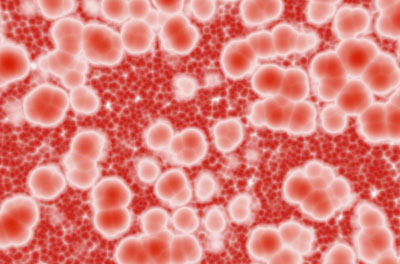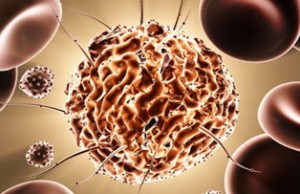Types of Blood Disorders

Blood disorders can affect any of the three main components of blood:
- Red blood cells, which carry oxygen to the body’s tissues.
- White blood cells, which fight infections.
- Platelets, which help blood to clot.
Blood disorders can also affect the liquid portion of blood, called plasma.
Blood Disorders Affecting Red Blood Cells
Blood disorders that affect red blood cells include:
Anemia : People with anemia have a low number of red blood cells. Mild anemia often causes no symptoms. More severe anemia can cause fatigue, pale skin, and shortness of breath with exertion.
Iron-deficiency anemia: Iron is necessary for the body to make red blood cells. Low iron intake and loss of blood due to menstruation are the most common causes of iron-deficiency anemia. It may also be caused by blood loss from the GI tract because of ulcers or cancer. Treatment includes iron pills, or rarely, blood transfusion.
Anemia of chronic disease: People with chronic kidney disease or other chronic diseases tend to develop anemia. Anemia of chronic disease does not usually require treatment. Injections of a synthetic hormone, epoetin alfa (Epogen or Procrit), to stimulate the production of blood cells or blood transfusions may be necessary in some people with this form of anemia.
Pernicious anemia (B12 deficiency): A condition that prevents the body from absorbing enough B12 in the diet. This can be caused by a weakened stomach lining or an autoimmune condition. Besides anem ia,nerve damage (neuropathy) can eventually result. High doses of B12 prevent long-term problems.
ia,nerve damage (neuropathy) can eventually result. High doses of B12 prevent long-term problems.
Aplastic anemia: In people with aplastic anemia, the bone marrow does not produce enough blood cells, including red blood cells. A viral infection, drug side effect, or an autoimmune condition can cause aplastic anemia. Medications, blood transfusions, and even a bone marrow transplant, may be required to treat aplastic anemia.
Autoimmune hemolytic anemia: In people with this condition, an overactive immune system destroys the body’s own red blood cells, causing anemia. Medicines that suppress the immune system, such as prednisone, may be required to stop the process.
Thalassemia: This is a genetic form of anemia that mostly affects people of Mediterranean heritage. Most people have no symptoms and require no treatment. Others may need regular blood transfusions to relieve anemia symptoms.
Sickle cell anemia : A genetic condition that affects mostly people whose families have come from Africa, South or Central America, the Caribbean islands, India, Saudi Arabia, and Mediterranean countries that include Turkey, Greece, and Italy. In sickle cell anemia, the red blood cells are sticky and stiff. They can block blood flow. Severe pain and organ damage can occur.
Polycythemia vera: The body produces too many blood cells, from an unknown cause. The excess red blood cells usually create no problems but may cause blood clots in some people.
Malaria: A mosquito’s bite transmits a parasite into a person’s blood, where it infects red blood cells. Periodically, the red blood cells rupture, causing fever, chills, and organ damage. This blood infection is most common in parts of Africa but can also be found in other tropical and subtropical areas around the world; those traveling to affected areas should take preventive measures.
Blood Disorders Affecting White Blood Cells
Blood disorders that affect white blood cells include:
Lymphoma : A form of blood cancer that develops in the lymph system. In lymphoma, a white blood cell becomes malignant, multiplying and spreading abnormally. Hodgkin’s lymphoma and non-Hodgkin’s lymphoma are the two major groups of lymphoma. Treatment withchemotherapy and/or radiation can often extend life with lymphoma, and sometimes cure it.
Leukemia : A form of blood cancer in which a white blood cell becomes malignant and multiplies inside bone marrow. Leukemia may be acute (rapid and severe) or chronic (slowly progressing). Chemotherapy and/or stem cell transplantation (bone marrow transplant) can be used to treat leukemia, and may result in a cure.
Multiple myeloma: A blood cancer in which a white blood cell called a plasma cell becomes malignant. The plasma cells multiply and release damaging substances that eventually cause organ damage. Multiple myeloma has no cure, but stem cell transplant and/or chemotherapy can allow many people to live for years with the condition.
Myelodysplastic syndrome: A family of blood cancers that affect the bone marrow. Myelodysplastic syndrome often progresses very slowly, but may suddenly transform into a severe leukemia. Treatments may include blood transfusions, chemotherapy and stem cell transplant.
Blood Disorders Affecting Platelets
Blood disorders that affect the platelets include:
Thrombocytopenia : A low number of platelets in the blood; numerous conditions cause thrombocytopenia, but most do not result in abnormal bleeding.
Idiopathic thrombocytopenic purpura: A condition causing a persistently low number of platelets in the blood, due to an unknown cause; usually, there are no symptoms, yet abnormal bruising, small red spots on the skin (petechiae), or abnormal bleeding can result.
Heparin -induced thrombocytopenia: A low platelet count caused by a reaction against heparin, a blood thinner given to many hospitalized people to prevent blood clots
Thrombotic thrombocytopenic purpura: A rare blood disorder causing small blood clots to form in blood vessels throughout the body; platelets are used up in the process, causing a low platelet count.
Essential Thrombocytosis (primary thrombocythemia): The body produces too many platelets, due to an unknown cause; the platelets do not work properly, resulting in excessive clotting, bleeding, or both.
Blood Disorders Affecting Blood Plasma
Blood disorders that affect blood plasma include:
Sepsis : An infection somewhere in the body spreads into the blood. Symptoms include fever, rapid breathing, respiratory failure, and low blood pressure.
Hemophilia : A genetic deficiency of certain proteins that help blood to clot; there are multiple forms of hemophilia, ranging in severity from mild to life-threatening.
Von Willebrand disease: von Willebrand factor is a protein in blood that helps blood to clot. In von Willebrand disease, the body either produces too little of the protein, or produces a protein that doesn’t work well. The condition is inherited, but most people with von Willebrand disease have no symptoms and don’t know they have it. Some people with von Willebrand disease will have excessive bleeding after an injury or during surgery.
Hypercoaguable state (Hypercoagulable state): A tendency for the blood to clot too easily; most affected people have only a mild excess tendency to clot, and may never be diagnosed. Some people develop repeated episodes of blood clotting throughout life, requiring them to take a daily blood thinning medicine.
Deep venous thrombosis: A blood clot in a deep vein, usually in the leg; a deep venous thrombosis can dislodge and travel through the heart to the lungs, causing a pulmonary embolism.
Disseminated intravascular coagulation (DIC): A condition that causes tiny blood clots and areas of bleeding throughout the body simultaneously; severe infections, surgery, or complications ofpregnancy are conditions that can lead to DIC.
These are just some of the most common conditions that people experience in the world. There are a plethora of others, and of course, major diseases.
To truly be immune to the threat these silent killers present, making sure your blood is healthy would be a good start. Click here to find out more.
Source : WebMD.com



